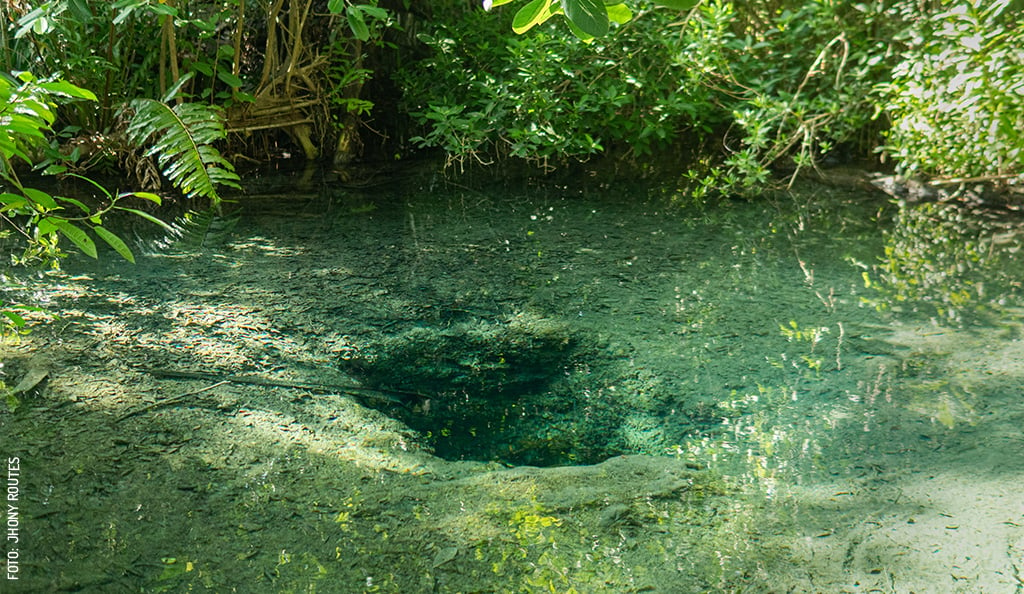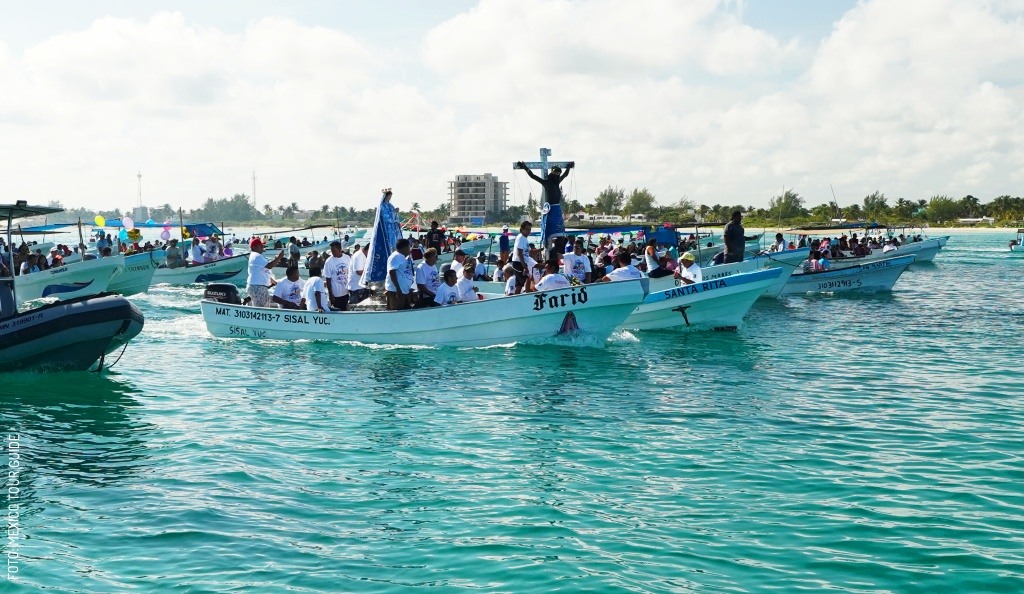
When Faith Meets the Sea: the Pilgrimage of the Black Christ of Sisal
The procession will be held on Sunday, August 24th, 2025
Life in Yucatán is full of dichotomies that, over time, you stop noticing. But every now and then, you get to witness events so unique and marked by these contrasts that they reintroduce you to the intrinsic magic of this state. Every town in Yucatán has its essence, and a big part of that comes from the traditional festivals and pilgrimages dedicated to each municipality’s patron saints. These celebrations beautifully showcase the rich contrasts within Yucatecan culture, and there’s no better example of this than the festivals held in Sisal during August.
Sisal is Yucatán’s only coastal Magical Town, where everyone goes by nicknames rather than their actual names, and which once was the most important port in the state. This port still hosts an event that truly left me in awe: the maritime pilgrimage of the Black Christ of Sisal. For locals, el Señor de Sisal (the Lord of Sisal), as he is known, watches over the lives of fishermen and blesses the sea that sustains the community. This year, the celebration was even more memorable as, for the 70th anniversary of the procession, Our Lady of Tetiz was invited to join the Christ for the first time, a moment that will stay with everyone lucky enough to witness this historic occasion.
But to truly understand and appreciate all the subtleties of this celebration, it’s best to start from the beginning, long before the much-anticipated day of the procession.
The history of the Black Christ of Sisal
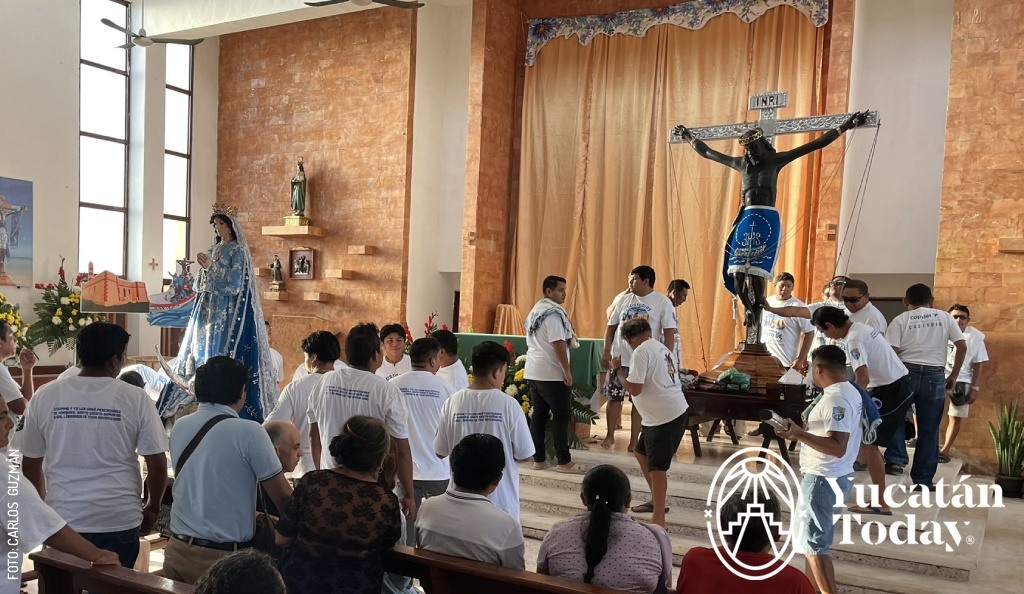
As with many ancient legends, the story of the Lord of Sisal has several versions depending on whom you ask. Most agree that this figure appeared on the shores of Sisal after a shipwreck. Some say it arrived as part of a ship’s cargo that sank, while others claim it was found by local fishermen. Additionally, some assert that the Black Christ arrived accompanied by two other “brothers”: the Christ of San Román in Campeche and, depending on the source, the third could be either the Christ of Love in Kinchil or the Christ of Dzilam de Bravo. Since Sisal did not have a church at the time, the Black Christ was taken to Hunucmá, where it resides most of the year in the Parish of San Francisco de Asís.
August arrives and the festivities begin in Sisal
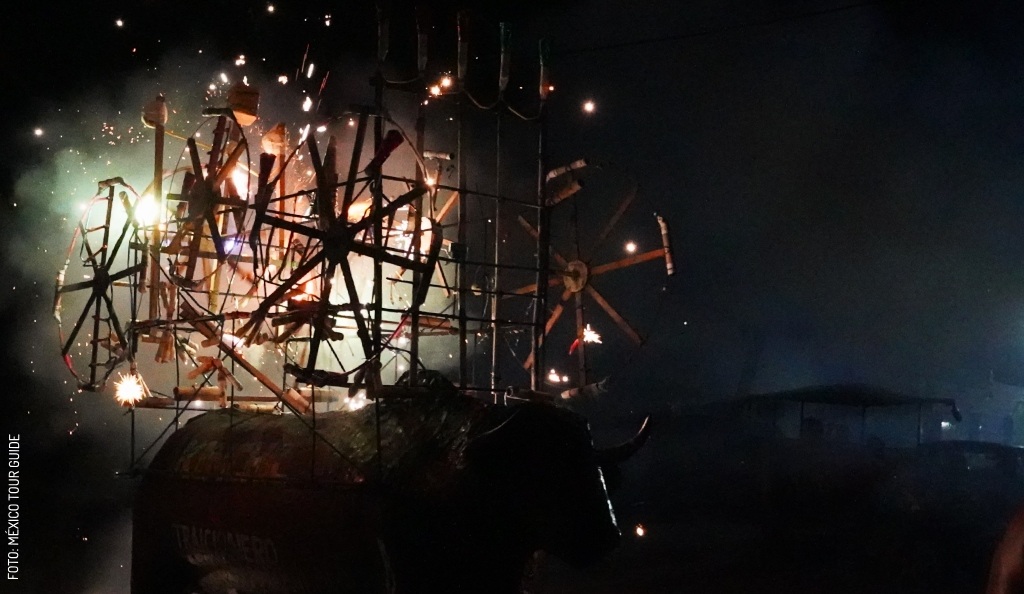
At the beginning of August, this revered figure leaves Hunucmá and is transported to the Chapel of San José in Sisal, marking the start of the patronal festivities in his honor. Although the celebrations last throughout the month, they reach their peak during the last week of August with the gremios’ (guilds) celebrations. Each gremio, which includes children, youth, and women, among others, celebrates on a specific day, but the most notable is the fishermen's gremio, which celebrates on the final day of the festivities—Sunday.
During this week, Sisal becomes packed, and the nights seem endless. The streets turn into a bustling scene of dancing, music, drinks, and a vibrant atmosphere that infects everyone. One of the most anticipated traditions is the burning of toritos at midnight: figures in the shape of bulls or deer, adorned with fireworks; some are carried on a person’s head, while others have wheels and are pushed. In either case, once the fireworks start going off, those controlling the toritos run after the attendees. This vibrant tradition fills the air with festive adrenaline, and you’ll likely find yourself repeating the phrase, "You only live once!" over and over.
Even though Saturday night celebrations run late, Sunday is when the true heart of the festivities comes alive: the pilgrimage of the Black Christ.
The pilgrimage of the Black Christ of Sisal
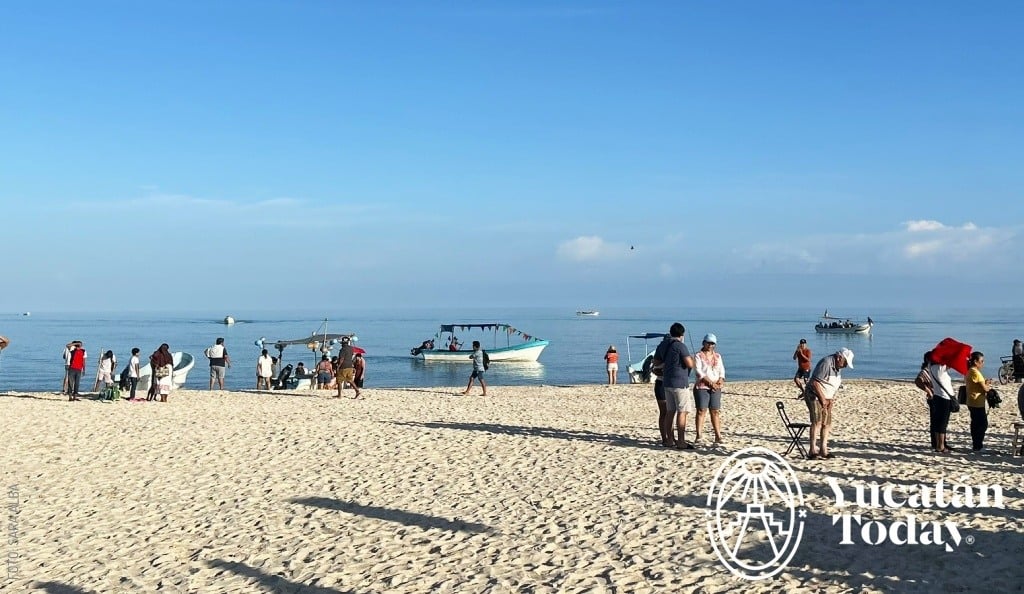
On Sunday, all the people of Sisal and the faithful gather early (some even having stayed up all night since Saturday celebrating) for the grand procession. The day begins before 6 am for those like the custodians of the Black Christ, led by Don Aire (Mr. Air—remember what I mentioned about nicknames?); they are responsible for making the final adjustments to the figures and carefully and respectfully removing them from the church, preparing them for the journey.
The mass, which precedes the procession, begins around 7 am at the pier, where the solemnity of the service blends with the soft sea breeze. After the mass, the custodians place the Black Christ on his exclusive boat, the Santa Rita. This year, due to the special visit of the Virgin of Tetiz, a new boat was assigned to her. Along with them, the charanga (musical band) and the banners board two additional boats, ensuring that the music and songs continue throughout the journey. These procession leaders are followed by hundreds of boats, all united in a floating parade that fills the sea and the hearts of the participants.
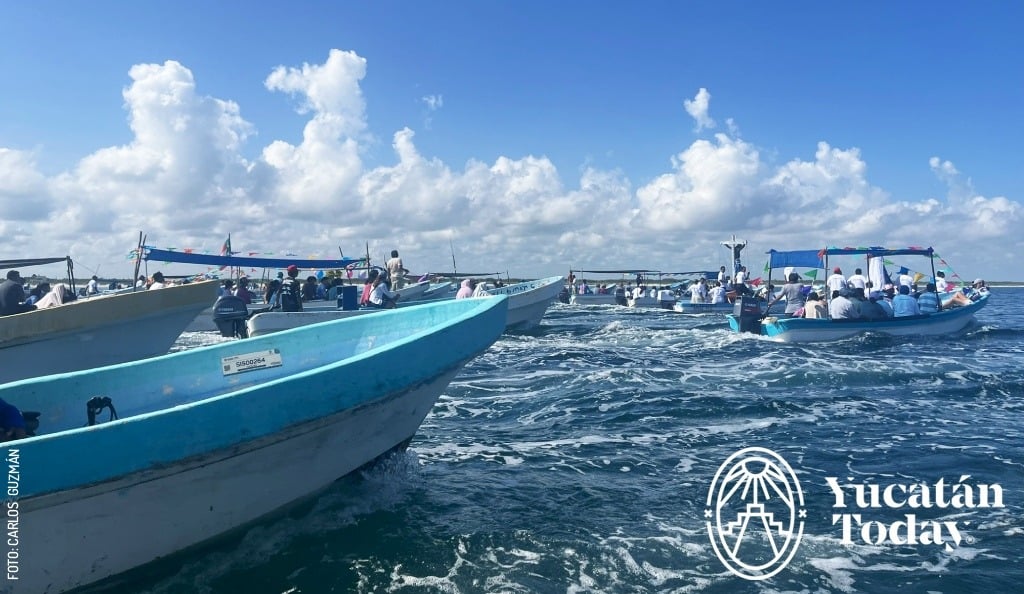
This procession at sea is a unique experience, with local boatmen offering their services for free each year to the devotees who wish to accompany the Christ. Due to the limited space of ten people per boat, it is essential to arrive early to secure a spot, as seats are assigned on a first-come, first-served basis. This celebration, which lasts about two and a half hours, begins at the pier and follows a route that includes sailing toward Punta Piedra, passing through Puerto de Abrigo, and returning to the starting point.
Don Pastor Enrique Gómez Morales, a local fisherman I had the pleasure of chatting with, was the one who took us out for the pilgrimage this year. He’s been part of this tradition since he was young, and for him, like so many others, this journey is not just a tradition but a promise of faith and gratitude. According to the fishermen, the festivities in honor of the Black Christ coincide with the end of the octopus ban (which runs from December to July), and it is believed that when the Christ goes out for his promenade, he blesses the sea and improves the weather, granting protection to those who depend on it for their livelihood.
A very special religious tradition
Sharing a boat with strangers, united only by their faith in the Christ, is truly a magical experience. During the pilgrimage, you will see some praying silently, others chatting joyfully, some singing, and others, deeply moved, shedding tears as they toss floral arrangements into the sea. In my case, I had the good fortune to spend the hours chatting with my fellow passengers, and in those conversations, I felt the genuine devotion and affection they have for the Lord of Sisal and the traditions surrounding this celebration.
A faith that unites the community
.jpg)
At the end of the sea journey, attendees gather at the pier to welcome the Lord of Sisal with songs and joy. The procession culminates with a midday mass, but the celebration does not end there. The festivities continue into the night, when the town comes together to bid farewell to the Black Christ with enthusiasm, already eagerly awaiting his return next August.
As you can see, in Sisal, as in many other corners of Yucatán, the spiritual and the festive coexist in a unique harmony during the pilgrimage of the Black Christ, reflecting the deep bond between the community and their faith. It is in these kinds of celebrations that you can tangibly feel the magic of Yucatecan traditions, events that not only unite the faithful but also touch the souls of all who are fortunate enough to witness them. Regardless of your beliefs, the pilgrimage of the Black Christ in Sisal is an experience you should live at least once in your life, as it brings you directly closer to the essence and charm of Yucatecan culture. See you next August!
Check back next summer for updates on the date and program for the 2025 Pilgrimage of the Black Christ of Sisal, as well as further tips on how to take part.
Photography by Carlos Guzmán, Sara Alba, and México Tour Guide, for its use in Yucatán Today.
First published in Yucatán Today print and digital magazine no. 443, in November 2024.

Author: Sara Alba
Panamanian with a Mexican accent since 2005. Editorial Assistant, a walking jukebox, and always lurking on social media, in the constant search of hidden gems to visit and share.
In love with Yucatán? Get the best of Yucatán Today delivered to your inbox.
Don’t miss out on our latest articles and the digital magazine before anyone else.
Related articles
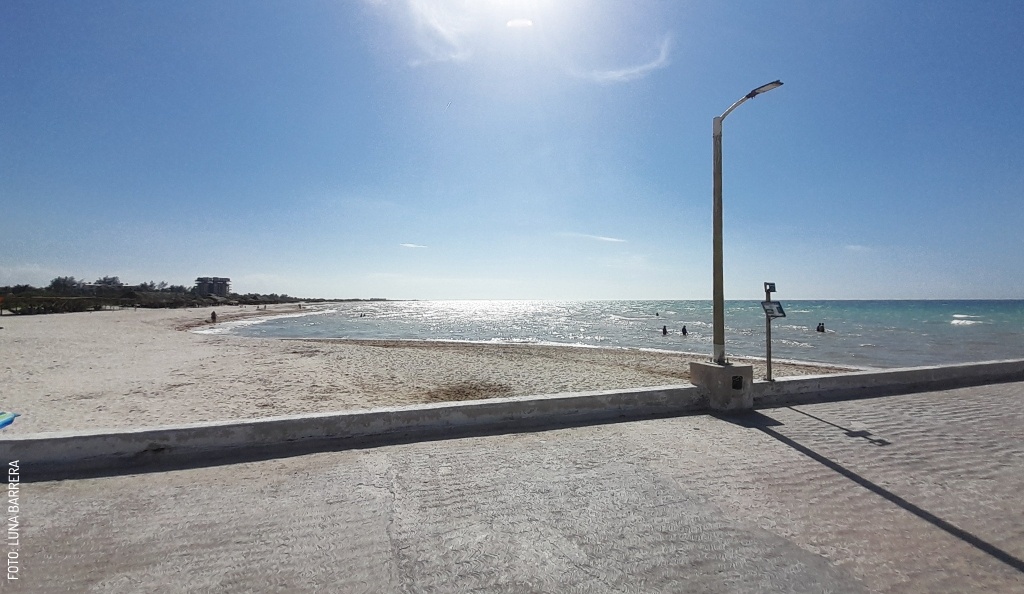
What to do in Yucatán in August
Summer is about to end, what are you waiting for? Check out the best events this month, traditional fairs and discounts in local stores.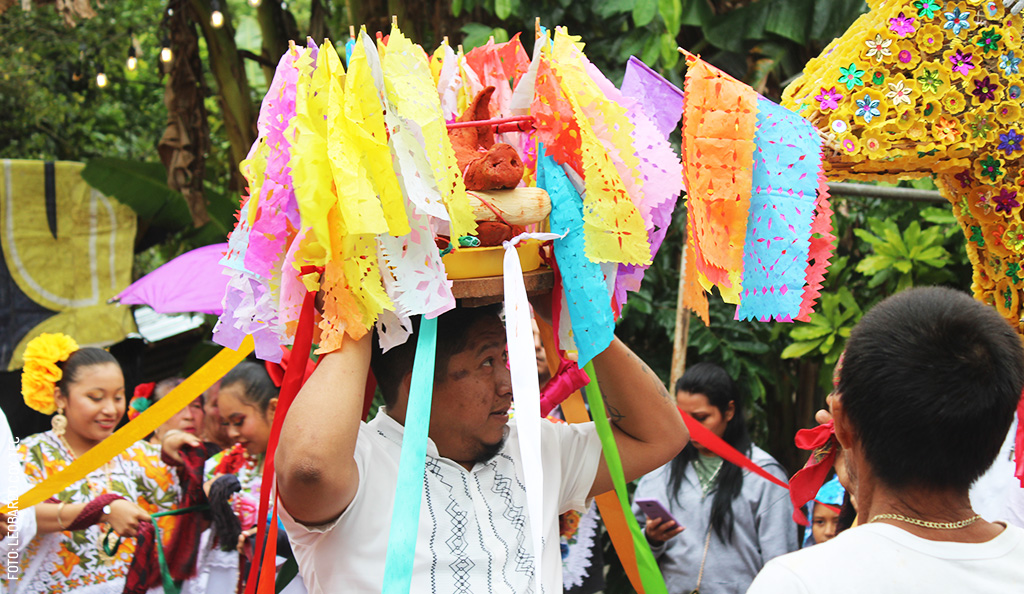
A Maya Christmas in Yaxcabá: Tradition, Faith, and Community
Maya Christmas in Yaxcabá, Yucatán: Community celebration, faith, and tradition. Experience the Star Dance, the prayer to the Christ Child, and the...